Poached chicken produces beautiful juicy white chicken perfect for chicken salads and Keto meal prep. Learning how to poach chicken is easy and the results are amazing.
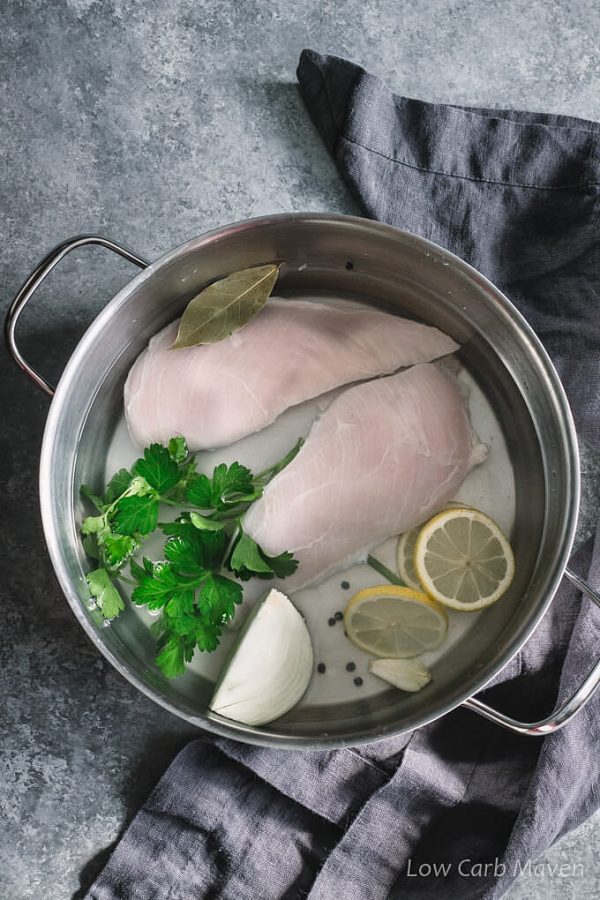
If you love chicken salad like I do, then you know tender chicken is the key to a good chicken salad. Whether you prefer a good curried chicken salad or a healthy avocado chicken salad without mayo, old-school poached chicken is the way to go!
With rotisserie chicken as an affordable option now-a-days, many people don’t know how to poach chicken for chicken salads or other dishes. I don’t know about you, but sometimes I just don’t want to deal with another leftover rotisserie carcass and my freezer is full to bursting with bone broth.
Poaching thawed chicken breasts or fresh chicken breasts from the store is an easy option on those days I have a little extra time.
Poaching is a wet cooking technique resulting in tender juicy protein with no caramelization or browning. It’s commonly used with eggs, chicken, and fish, but poaching fruit in spiced fruit juice or wine is also popular. Poaching liquid is typically seasoned and imparts delicate flavor to proteins.
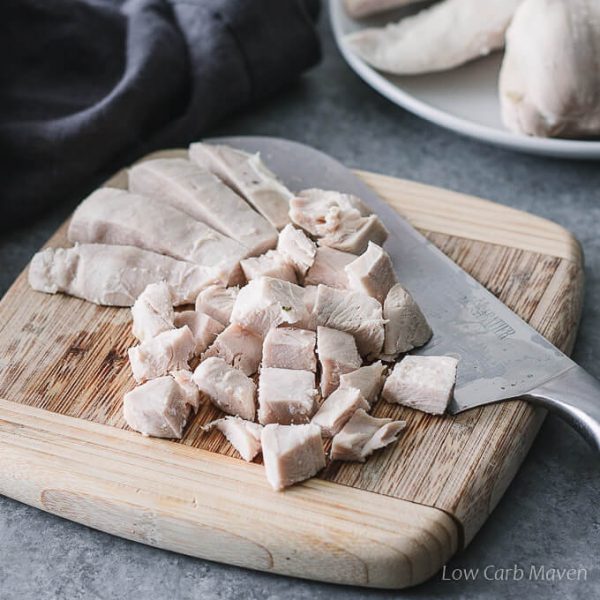
Although poaching is an easy skill to master, without the proper attention it can go wrong, leaving you with rubbery dry chicken. The most important tip I can share is to NOT let the poaching liquid come to a rapid boil. Cooking the chicken gently in the poaching liquid is the way to go!
How to poach chicken for chicken salad
Let the chicken come to room temp for 20-30 minutes before starting and gently pound to flatten to a more even thickness. Gather the aromatics for the poaching liquid.
Common aromatics are lemon, parsley, bay leaf, peppercorns, thyme, dill, rosemary, onions, and garlic. Vary the aromatics depending on the finished dish. Add fresh ginger, garlic and dried chives for a Chinese inspired chicken salad or Indian inspired flavors for a curried chicken salad.
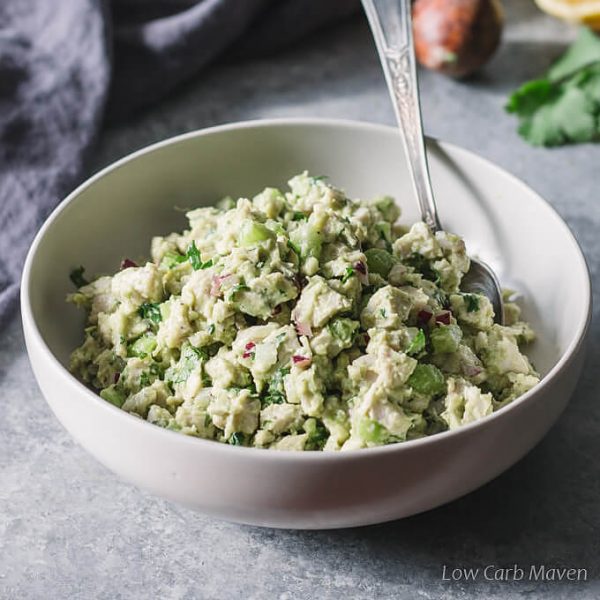
Place chicken into the pot in a single layer. Cover the chicken with cold water (or broth or add a little white wine) to the depth of 1 inch over the surface of the chicken. Season with plenty of salt. Bring to a low simmer over medium heat. Turn the heat down to low and cook for 8-10 minutes at a very slow simmer until cooked through.
The chicken is done when the juices run clear when pierced with a fork and the internal temperature is 170 degrees F. Remove the chicken when the thickest part of the chicken breast reaches 165 F ("carry over cooking" will bring it up to 170 F as it sits).
Let cool completely, then dice. Dicing while warm will result in ragged cuts (like in my photos) which may not matter if making a chicken salad, but may matter if the poached chicken is the star of the meal.
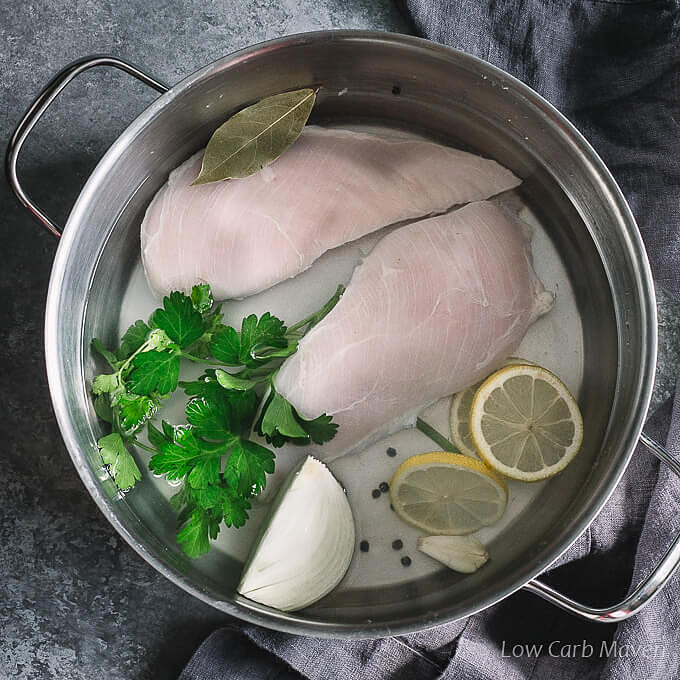
How to Poach Chicken for Chicken Salad
Ingredients
- 4 medium boneless skinless chicken breasts (about 1 ½ pounds)
- 1 half lemon, sliced
- ¼ small onion, peeled
- 1 large garlic clove, crushed
- 1 bay leaf
- 8-10 whole black peppercorns
- 1 handful fresh parsley
- 1 ¼ teaspoon salt
- water to cover the chicken by 1 inch
Instructions
- Let the chicken come to room temperature for 30 minutes and gently pound to even out the thickness a bit. Meanwhile, gather the ingredients for the poaching liquid. Slice the lemons, cut the onion and crush the garlic.
- Add a few cups of water to a large pot and stir in the salt. Add the chicken to the pot in a single layer. Add the rest of the ingredients finishing with more water to cover the chicken by 1 inch.
- Place the pot over medium heat and let the contents come to a simmer. Periodically, give the pan a gentle shake to help distribute the heat evenly. Lower the heat to low and let gently and slowly simmer for 8-10 minutes until the internal temperature of the chicken reaches 170 degrees F. Another way to check if the chicken is done is to pierce the chicken with a knife or a fork and check that the juices run clear - not pink.
- Remove the chicken from the poaching liquid and let cool completely before storing in the refrigerator or using in chicken salad. (My chicken was still warm when I took photographs and it cut a little raggedly. Chilling the chicken before dicing yields the best result.)
Notes
Nutrition
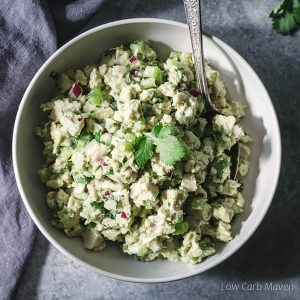
Avocado Chicken Salad Recipe (Keto, Low Carb)
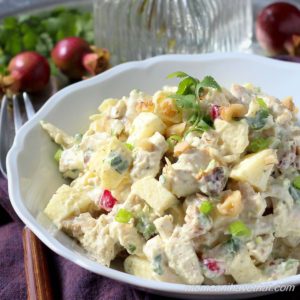
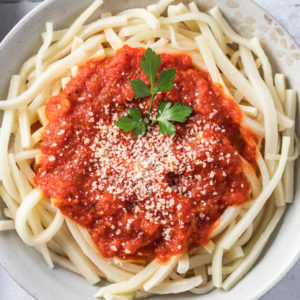
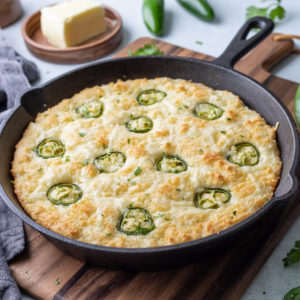
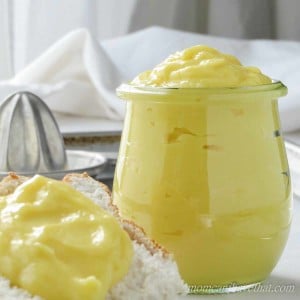
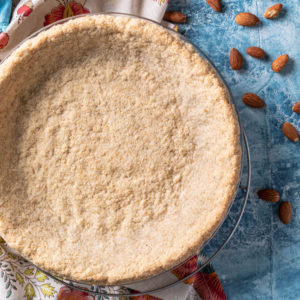

Jo
Can I use the liquid the chicken was poached in for chicken soup?
Kim Hardesty
I suppose you could, but it won't have a lot of chicken flavor. You could add some chicken base to it to bump the flavor. -Kim
Ruth PKK
I made chicken tonight. The only kind I had in the house was thin cut slices of chicken breast. I always start cooking too late so I put some butter and olive oil in the pan and sauteed a few pieces. When several were done, I put them on the cutting board and cut them up for the dog and I ate one on a half of roll. Although hot right out of the pan, they did not shred, possibly becaa.m.usse I only had to cut them into pieces and not cubes. I added more chicken stock and some soup vegetables like onion, celery and carrot. I left it to simmer with the chicken and those vegetables. When I heat it to eat on another day, I'll add some snap peas; they cook in a few minutes and won't get overcooked and soggy that way. I'll eat some of the chicken in the soup and cut some up for chicken salad but it is almost 1 a.m. so I don't want to eat any more tonight. Added salt, dried thyme and parsley but did not have a bay leaf. Just added it to my shopping list for next time. Last time I used your recipe with soup stock, I had the soup for dinner but it was earlier than tonight. I'll let it simmer a few more minutes while I clean up the kitchen a bit, then turn it off for the night and let it cool. My kitchen does not get much heat, especially at night, when I turn it way down for sleeping (62 degrees) so it can sit out witha cover that I'll add when I turn it off.
Christy M
Just finished poaching my chicken and it smells fantastic in here. I am trying to lose some extra weight I put after an injury and unfortunately bouts of depression tend to get in my way of daily life all the time so being able to prep this on a good day is half the battle. Great recipe perfect for the on the go person or someone like myself. Thanks
Laurie
Wow, and end to my dried out chicken! This recipe is great, the house smelled wonderful while the chicken poached and the end result was moist chicken for chicken salad and just chicken top my weekday lunch salad!
Angelina
Chicken Breasts are done when the temperature on a meat thermometer reaches 165 deg., when inserted into the thickest part of the breast (since there will always be some "carryover cooking" after its removed from the water (or from the oven if you're baking it). This is how I do it, and my chicken is always throughly cooked, tender & juicy. That being said, I'm making Chicken Salad for tonight, since it's hot & humid here today, and we'll be eating light. We're having Chicken Salad stuffed into low carb Pitas (Joseph's) w/a leaf of Bibb lettuce, and a huge Tomato, Cucumber, Shallot & Parsley Salad. Also having cold brewed WatermelIon Iced Tea. Even the kiddoes can't wait! Have a terrific day, Kim. :-)
Kim Hardesty
Sounds delish! -Kim
Rachael
Hi Kim - Thanks for this great recipe for poaching chicken for salad! One question: I'm assuming you keep the lid on the pot while bringing to a simmer and then sustaining the simmer. Is that correct? Thanks! Rachael in Ashland, OR
Kim Hardesty
I did not, Rachael, I watched it and turned the chicken over half way through. The reason I did that is because I have had the water get too hot when the pot was covered and the chicken overcooked. If your pot keeps temperature well, you can cover it. I would still check on it periodically to be sure that it doesn't simmer too rapidly. -Kim
Johanna
Science says put chicken in fridge immediately to keep the germs from growing on the warm surface.
David
Might not want to hold too tightly to that "immediately" part. When the chicken first comes out of the water, its heat alone will protect it from bacterial growth. Don't leave it sitting all afternoon, of course, but there is no harm in allowing it to cool a bit before refrigeration. And, depending on the quantity of food involved--for instance a large pan of chicken to make salad for 30 people, or a roasted turkey--putting it steaming hot into the fridge can compromise the fridge's temp and therefore its ability to protect other foods that are in there, like raw meats that are far more susceptible than cooked. Lastly, if you put foods with significant volume & density (soups, casseroles) into the fridge before they have cooled sufficiently, you run the risk of them being ruined by souring-- the outer layers (the surface, and the food that is directly against the sides of the pot) will cool far faster than the core. The two regions butting up against each other can cause the food to go sour. We were once forced to throw away about 15 gallons of seafood chowder for this very reason.
Marykay
Can I use canned chicken in water instead of poaching the chicken?
Kim Hardesty
Hi Markay. This is a post about poaching chicken, which is a fancy old-school way to serve chicken with specific sauces and specific dishes or to make moist chicken for chicken salad. You can use your favorite chicken in your recipes. Canned chicken is stringy and dry, but affordable and easy to use. Rotisserie chicken and boiled chicken are also great options for chicken salad. I have a post which includes 6 methods for how to cook chicken for shredded chicken. The chicken can be diced for chicken salad as well. Use what you have, but it you want poached chicken, this is a nice way to do it. -Kim
Stephania
I have a question! Can I throw these same ingredients in a crockpot and slow cook instead? I’m hoping to use the end result for chicken salad. Thanks!!!
Kim Hardesty
Yes, you probably can, Stephania, but crockpot chicken breasts tend to be overdone and dry/stringy. Poaching until "just done" prevents the chicken from overcooking. You can even grill the chicken for a southwestern type chicken salad if you wanted. Honestly, you can cook the chicken any way you want, but for a "classic chicken salad", this is the "classic method". It's your kitchen so you get to decide which method suits your skill, desire, and time. Have a great weekend. -Kim
Karl
Actually, you should never put hot food directly in the fridge. Until the internal temperature of the food cools to 135° F, there is little risk of bacterial growth. You can consult the FDA Food Code for the proper cooling of food.
A.
If you state the nutritional values for food, please state the portion size. Without that, the other information is pointless.
Kim Hardesty
Sure A. A pound and a half of chicken is 24 ounces, divided by 6 servings is 4 ounces per person. This is raw weight. During cooking, chicken loses about 30% of its weight (moisture). A good approximation is 3 ounces cooked chicken per person, especially if using it in something like a chicken salad. I hope that helps. -Kim
Shannon
Thank you so much for this recipe! I've never been able to poach chicken 'just right' for chicken salad, but this was delicious + the tip to have it cool prior to cutting.
Kim Hardesty
I'm glad, Shannon. -Kim
Debra
Hi
Does poaching work with turkey breast?
Kim Hardesty
Sure. You can poach any poultry and most fish. The difference would be in the time needed to poach the different protein. The turkey break will need more time, but since I generally only poach chicken, I don't know how long it would take. Use an instant read thermometer and the poultry is completely cooked at 170 F. Convention is to remove it from the heat source and lightly tent with foil and it will come up to 170 by latent cooking. -Kim
Susan
Thank you for the reminder on poaching chicken. You are so right about the seeming convenience of supermarket cooked chickens, they are just not quite “right” for salads. I had always added a few bone in breasts to cook on for a light broth for soups or sauces.
Alice Osborne
This is such a helpful site. Thanks for time and effort you put into it. You're blessing lives by sharing your knowledge and talent.! (And I've been cooking for 50+ years and didn't know your tips on poaching chicken. You've made my day!)
Kim
Hi Alice. So nice to meet you. I'm glad you have found some benefit to the site. Enjoy your day. -Kim
Alice Osborne
Thanks Kim. I'm getting ready to poach my chicken and thought I'd cut the breasts in half, lengthwise, to thin them down without having to pound them. I'll report back on this experiment.
chelsey
I'll admit, I get so nervous cooking chicken that I may have simmered the chicken a few extra minutes. I shredded it while warm to use in a salad and I think it's great. Thank you for a new method to cook chicken. I only used lemon, bay leaf, and peppercorns.
Sharon
Thank you for this wonderful avocado chicken salad recipe. I admit I left out the celery (personal taste) but, I absolutely LOVE this delightful dish!!
Kim
Thanks Sharon. I'm so glad you like the recipe. I hope you have a wonderful week. -Kim
Holly
Thank you so much for your valuable contribution to keto culinary! I have been perusing low carb recipes for some time now and yours our my favorite. You have a unique style (which I love) in step by step directions and it's truly the best I've come across. Not to mention your recipes that I've tried so far are spectacular!
Thanks so much and keep them coming!!!! You have one appreciative fan here!
Kim
Holly, what wonderful things you say! Thank you so much, I truly appreciate you taking the time to let me know your thoughts. I hope you don't find too many recipes that fall short of expectations. Have a wonderful day. -Kim
Brad
Hi, Kim! Thank you for this technique. After searching for how to get perfectly poached chicken breasts every time, I came across a chicken breast poaching technique in Cook's Magazine, and it turned out good, too. They use a brining liquid as the poaching liquid. I don't recall the detailed amounts off the top of my head, but they used a gallon of cold water, and stirred in soy sauce, garlic, a bit of sugar, salt, thyme, until the salt and sugar had dissolved. (I substituted coconut aminos for the soy sauce, and a touch of sweetener instead of sugar.) They made sure the chicken breasts were no more than ¾ inch thick at the thickest, using a meat pounder to "adjust" the breasts that were too thick. They then arranged the breasts in a single layer on a basket steamer. (I had to scrunch mine together to make them fit.) The breasts-on-steamer were lowered into the (cold) brining liquid for 30 minutes, then put over medium high heat. Jiggle the steamer basket every few minutes to make sure the temperature of the water gets spread around. The water was brought just to 175° F, then the pot was taken off the heat and covered. (I used an instant read thermometer. Cook's Illustrated had clipped a continuous-read thermometer to the side of their pot. Whatever works. But stopping at the right temperature is the point.) The off-the-heat covered pot rests for 15-20 minutes and the chicken's internal temperature rises during that time. Once the chicken's internal temp reaches 165° F, take the chicken out of the liquid and rest under tented foil for about five minutes before cutting, or just pop them in the fridge for use later.
Kim
Interesting method, Brad. Thanks for sharing. I use a similar method for hard boiled eggs, starting them in cold water, and the eggs always come out perfect so why not use it with chicken and other proteins?Actually, the method I share is how I was taught in a cooking program I attended, but we used a hotel pan to cook many chicken breasts at once. For cooking on the fly for service, we had a few pans of poaching liquid at a bare simmer for each order.
The method you mention above almost sounds like a sous-vide technique where the water is kept at the same temperature so that there isn't the chance of the chicken over cooking. I really like the idea of using a brining liquid to impart tenderness AND flavor - a poaching liquid usually just "scents" the protein. Thank you for mentioning the thickness of the breasts, as I did not address it in the recipe (I just even the chicken up by habit) and think it should be mentioned. Again, thanks for sharing, Brad. I hope you enjoy your week. -Kim
Dave
sounds great.
I'll probably stuff mushrooms tops or bell pepper.
Aria
Thanks for the great recipes...........nice post too!!!